The market: trading and parade ground, monuments and fountains
The finds from the excavations on the market date back to the
stone age. There is evidence of a Bronze Age settlement and a large Slavic settlement.
Excavated medieval cellars testify: The medieval market was rectangular like in many medieval towns. After the town fire in 1758, however, a number of houses were not rebuilt. It was only then that the Anger-shaped square that we have today was created. Until 1806, the garrison cavalrymen drilled on the new square.
One of the excavated foundations tells of a medieval department store. Another floor plan may have included a glazier's shop that produced high-quality painted glass panes. A Madonna's head was also found in one of the houses - the head of a Madonna or a saint from the
16th century made of pipe clay. It probably belonged to a private house altar or was a souvenir from a pilgrimage.
With the construction of the new (today's) town hall in 1854, the square finally got its current appearance. The war memorial erected after 1871 was surrounded by a small green area, which was gradually developed into a triangle. In 1931 a second war memorial was erected to commemorate those who died in World War I. After 1945 the first memorial was torn down and the second re-inscribed: "To honor the dead - as a reminder to the living". In the 1960s, the triangular green space was adorned with a fountain, which the people of Wusterhausen affectionately called the "Compote Bowl". With the redesign in 2009, a new fountain was created and the market was designed as a free space for festivals, with the names of the 22 districts of the municipality of Wusterhausen/Dosse embedded in the pavement.
The tour ends here. (For now - more themed tours will follow)
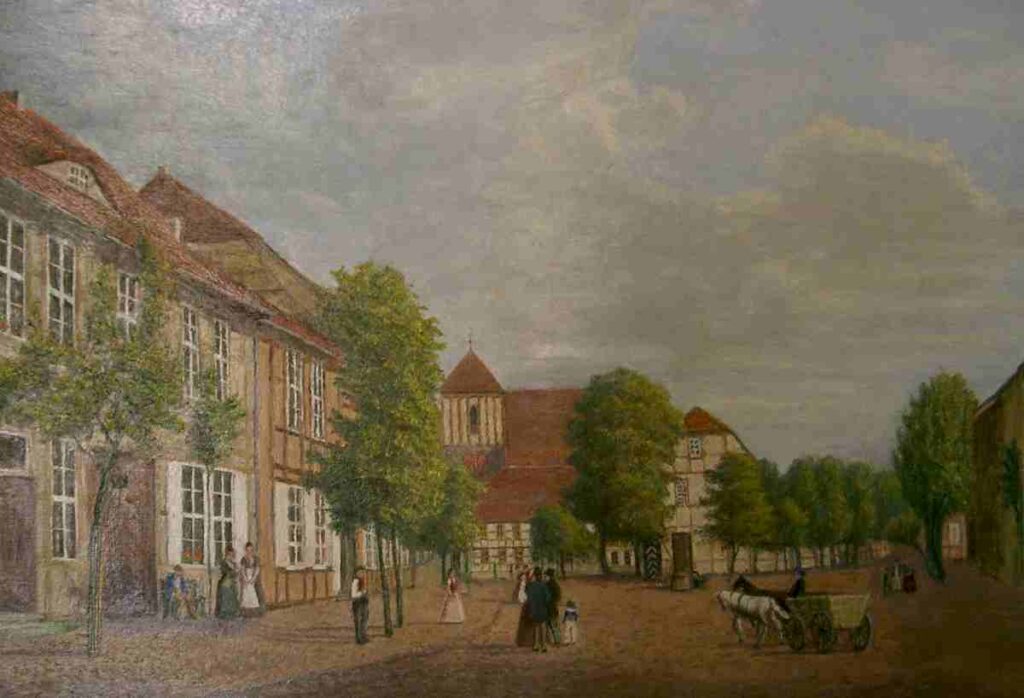
Market square with the old town hall, painted by Theophil Dombrowski based on a copy of a template by Wilhelm Barth in 1839, repro: Wegemuseum
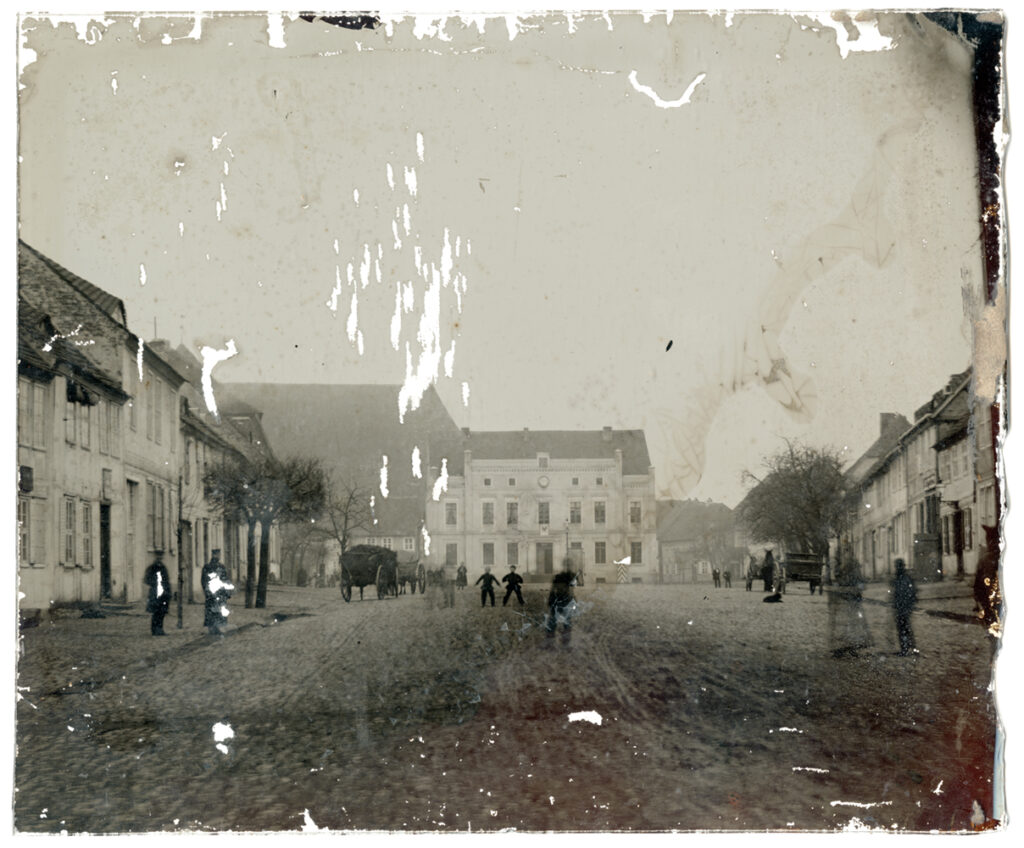
The unknown photographer took this picture of the Wusterhausen market square in late autumn or winter. You can see several horse-drawn carriages, passers-by and the first city lights. The ambrotype is a unique process based on wet colodium.
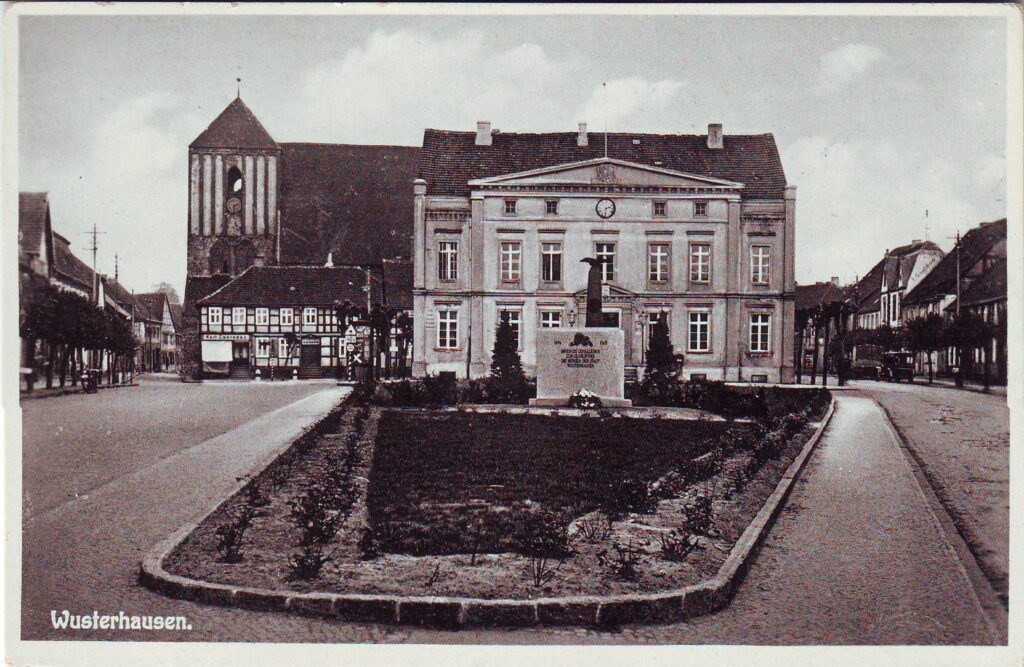
The market after the erection of the second war memorial
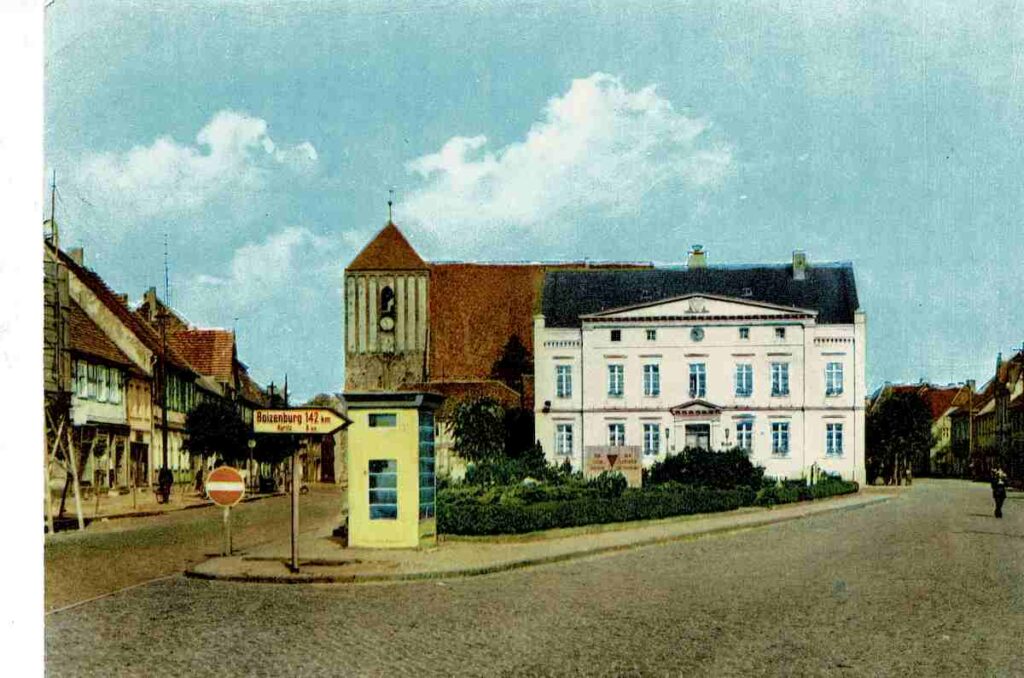
Photo market before remodeling
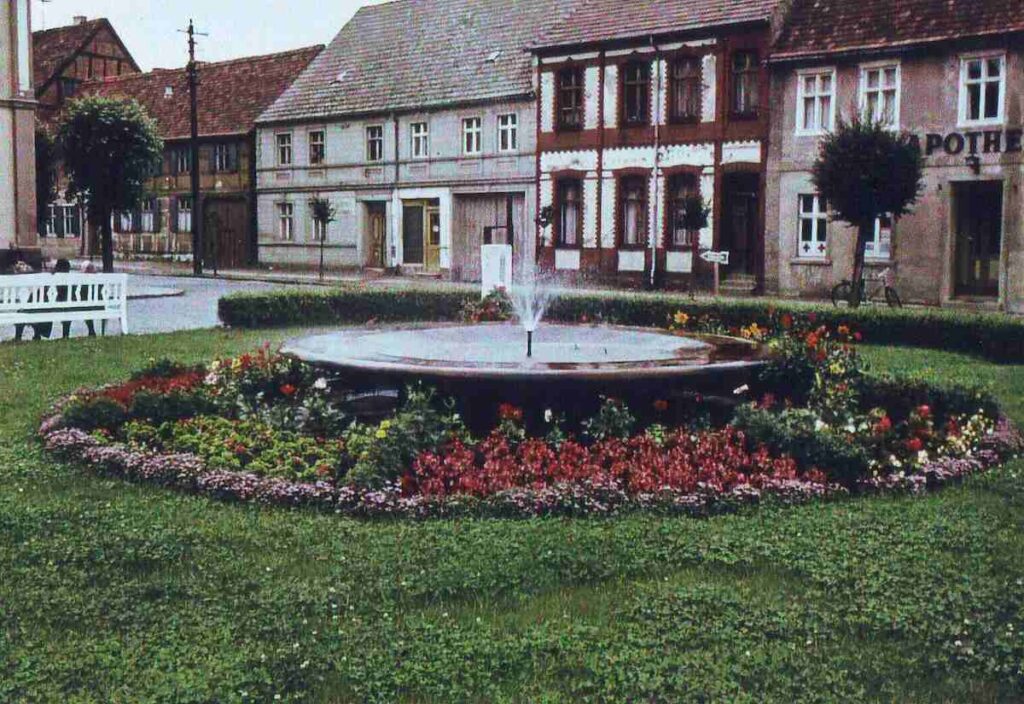
Market with fountain, before 1983
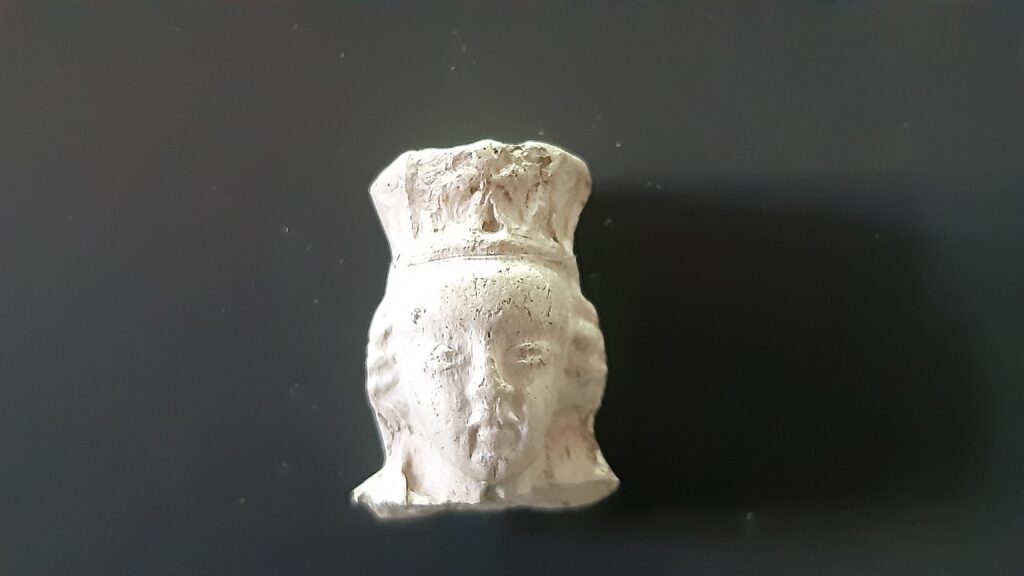
Medieval head of the Madonna found in 2009 during excavations on the market, photo: KAZ
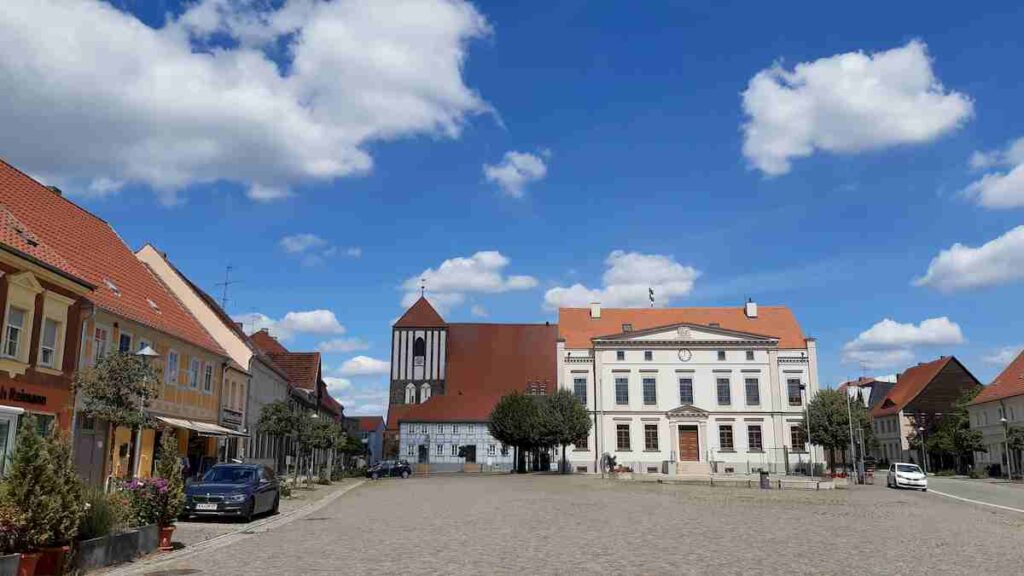
Market 2020, photo: KAZ
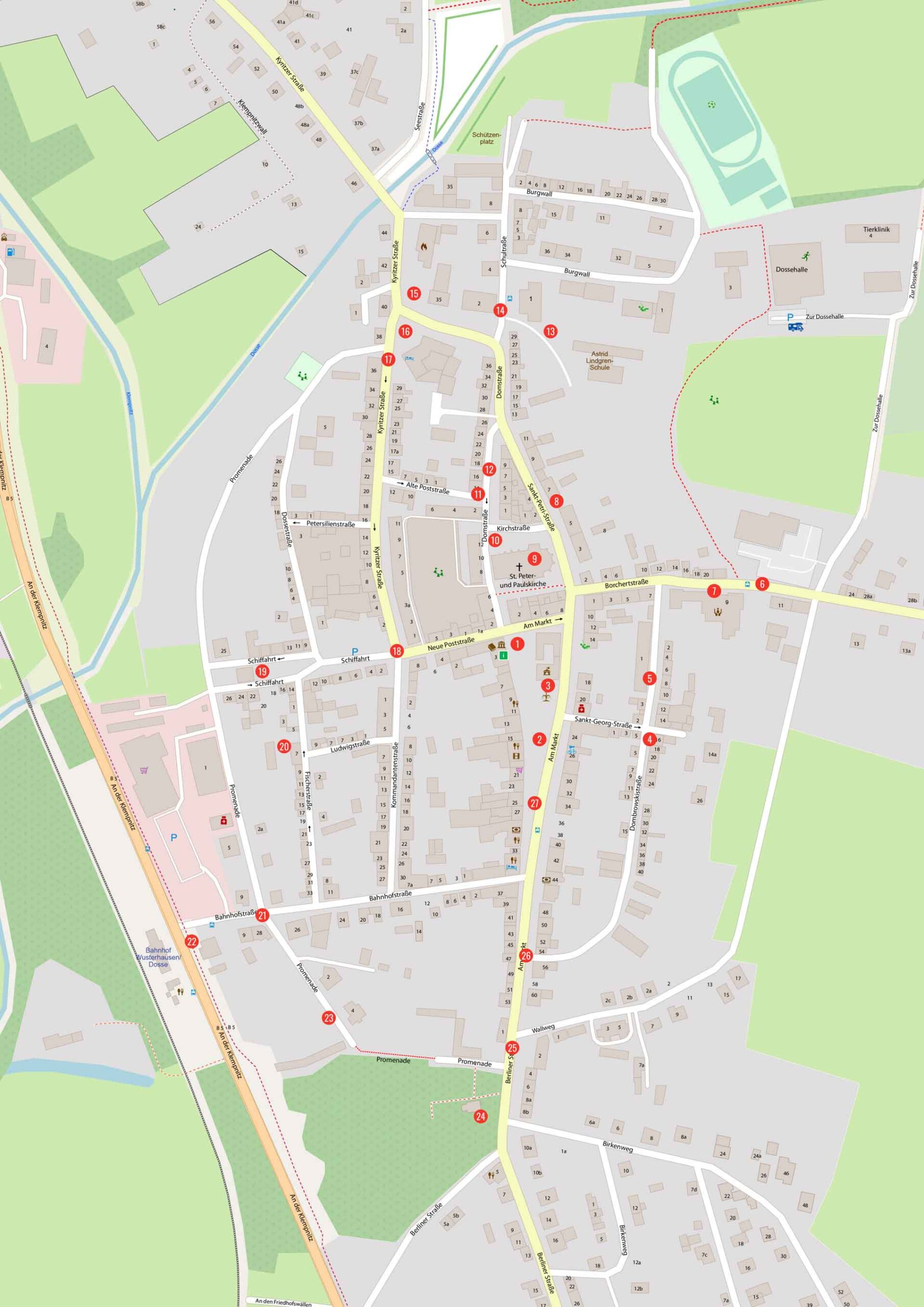
City walk map general view
